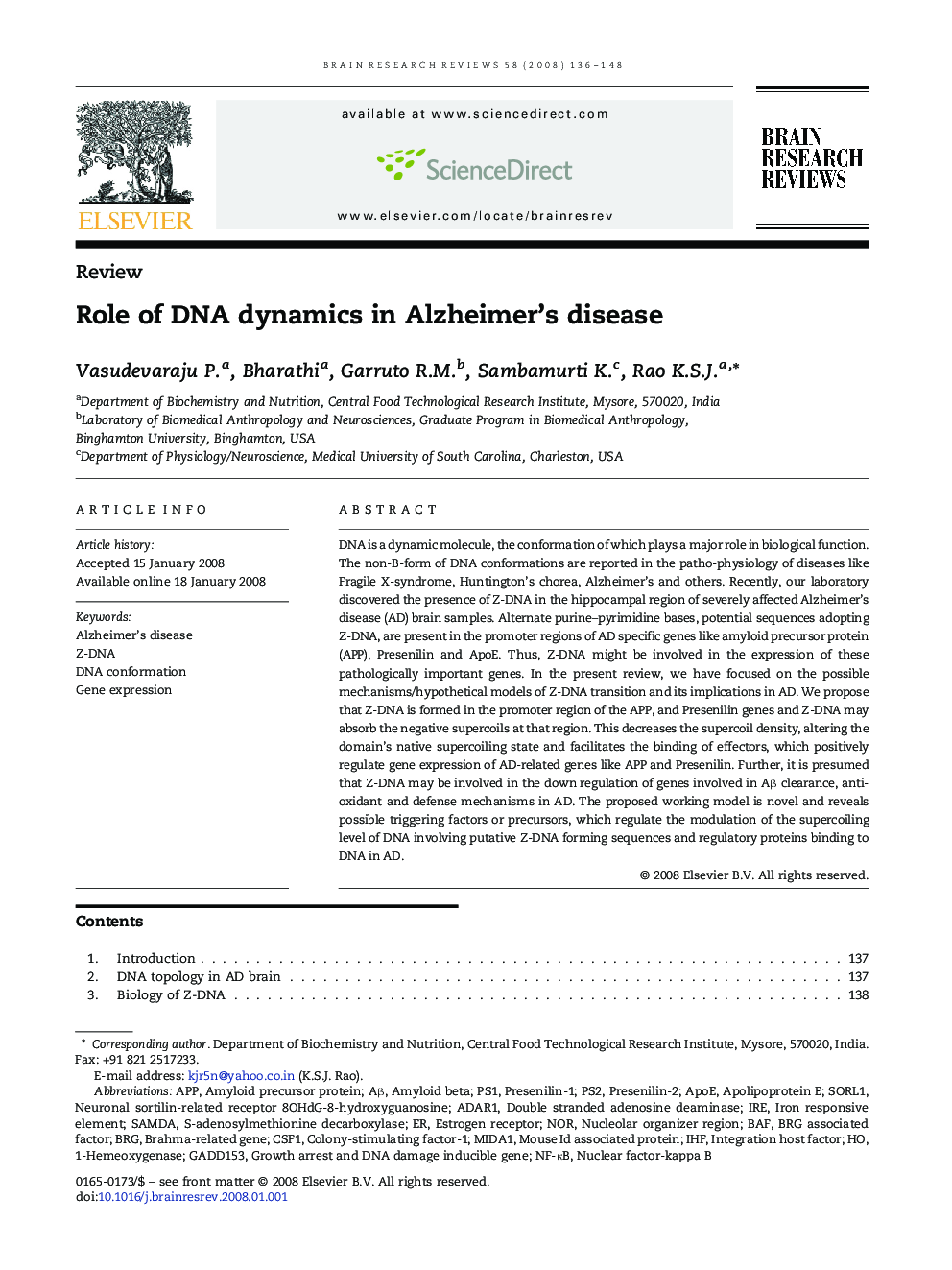| Article ID | Journal | Published Year | Pages | File Type |
|---|---|---|---|---|
| 4333757 | Brain Research Reviews | 2008 | 13 Pages |
DNA is a dynamic molecule, the conformation of which plays a major role in biological function. The non-B-form of DNA conformations are reported in the patho-physiology of diseases like Fragile X-syndrome, Huntington's chorea, Alzheimer's and others. Recently, our laboratory discovered the presence of Z-DNA in the hippocampal region of severely affected Alzheimer's disease (AD) brain samples. Alternate purine–pyrimidine bases, potential sequences adopting Z-DNA, are present in the promoter regions of AD specific genes like amyloid precursor protein (APP), Presenilin and ApoE. Thus, Z-DNA might be involved in the expression of these pathologically important genes. In the present review, we have focused on the possible mechanisms/hypothetical models of Z-DNA transition and its implications in AD. We propose that Z-DNA is formed in the promoter region of the APP, and Presenilin genes and Z-DNA may absorb the negative supercoils at that region. This decreases the supercoil density, altering the domain's native supercoiling state and facilitates the binding of effectors, which positively regulate gene expression of AD-related genes like APP and Presenilin. Further, it is presumed that Z-DNA may be involved in the down regulation of genes involved in Aβ clearance, anti-oxidant and defense mechanisms in AD. The proposed working model is novel and reveals possible triggering factors or precursors, which regulate the modulation of the supercoiling level of DNA involving putative Z-DNA forming sequences and regulatory proteins binding to DNA in AD.
